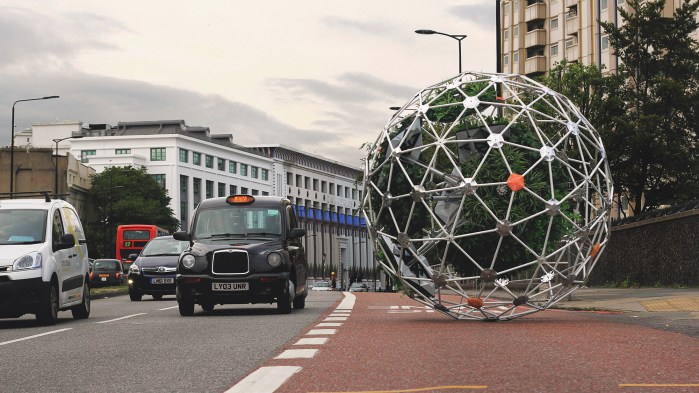We’re accustomed to taking care of plants obsessively, especially at the beginning, when we don’t understand why their leaves get yellow or why they’re not making flowers anymore. It’s our duty, after having them removed from their natural environment. But “Hortum machina” project tries to give back plants’ independence, letting them choose what’s the best environment for them. They will even “walk” to it #objectmagic
The “cyber garden” was created by William Victor Camilleri and Danilo Sampaio from the Bartlett School of Architecture at the University College London. They imagined a rounded structure with 12 garden modules that becomes mobile by shifting the center of gravity. It can roll over to where it “feels” it can survive better, since students are relying on its electro-physiology, the thing makes them primitively intelligent:
The moment its sensors agree the place is ideal for survival, the garden stop moving and starts flourishing. The “migration” starts again, if conditions change or resources diminish.
It’s really remarkable to see it in motion and the creators believe it suits well “the near future context of driverless cars, autonomous flying vehicles, and seemingly endless other forms of intelligent robotics co-habiting our built environment. Hortum machina B is a speculative urban cyber-gardener.”
Follow TechTheLead on Google News to get the news first.























